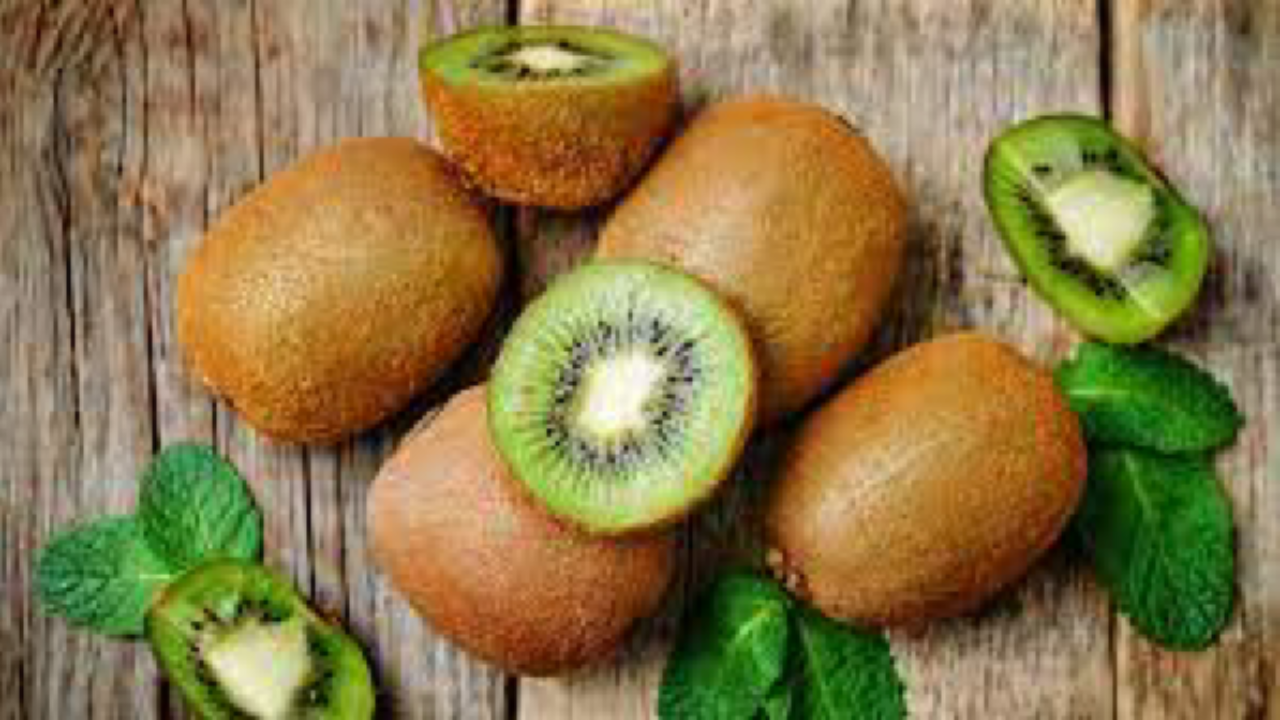Kiwi Fruit

HISTORY AND BACKGROUND
The kiwifruit is a large berry that grows on a species of woody vine in the genus Actinidia. Kiwis have been famously cultivated in New Zealand, but it actually originated in eastern China.
The kiwi fruit typically grows in an oval shape and is roughly the size of an egg. Its skin is camel in color, fibrous, and coated in a light fuzz. Despite its fuzzy covering, the kiwi’s skin is edible and tart. The kiwi’s flesh is bright green with rows of distinctive tiny black seeds, which can also be eaten. Kiwis have a sweet, tart, and bold taste — making them a popular addition to a healthy breakfast or lunch.
IMPRESSIVE HEALTH BENEFITS

Kiwi fruits are high in Vitamin C and dietary fiber and provide a variety of health benefits. Kiwi fruit stands number one in nutrient content compared to 27 other fruits. It is packed with twice the amount of Vitamin C — compared to oranges (per 100 mg) — and has twice the amount of nutrients — compared to apples (per 100 mg).
- Immunity - abundant in Vitamin C and rich in antioxidants.
- Heart health - lowers blood pressure and can help reduce the risk of stroke and heart disease
- High in Fibre - lowers bad cholesterol and helps with digestive health.
- Treatment of Asthma - the amount of vitamin C found in kiwis can help with the reduction of wheezing symptoms. Most benefit has been seen in children.
- Ocular Health - the high levels of antioxidant vitamins and carotenoids found in the kiwifruit may aid in preventing eye disease and promote overall ocular health.
- improve sleep quality - when eaten before bed as they are rich in serotonin and antioxidants.
Kiwi is a delicious and healthy snack, but it still contains naturally occurring sugar. Because of this, you should consume kiwis in moderation. The intake of kiwi should be 140 grams or less in a balanced diet.
How to Prepare Kiwi
To benefit from kiwis the most, they are best served raw.
Here are a few ways to serve the kiwifruit:
- Slice fresh, room temperature kiwis for a delightful side to your breakfast.
- Blend kiwi into a strawberry kiwi smoothie.
- Serve sliced kiwis with bananas as a tasty fruit salad.
- Pair with Greek yogurt for a light and refreshing dessert.
Disadvantages of kiwi fruit?
Bleeding disorders: Kiwi might slow blood clotting. In theory, kiwi might make bleeding disorders worse.
Allergies: Kiwi may cause allergic reactions in people who are allergic to other fruits, plants, or spices such as avocado, birch pollen, fig, hazelnut, latex, poppy seed, rye, sesame seed, or wheat.
Aafiyah Healing Community is open for registration!
A community dedicated to supporting you in your healing journey!

